Zisen Sang
Spatiotemporal-Enhanced Network for Click-Through Rate Prediction in Location-based Services
Sep 20, 2022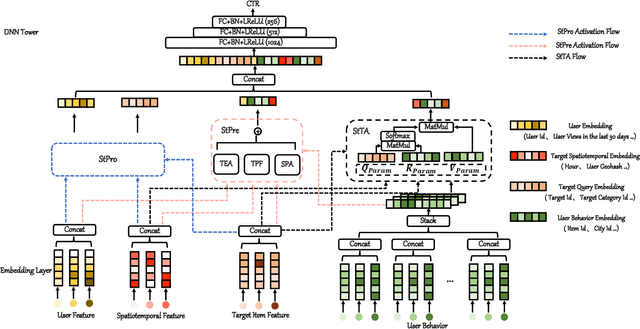
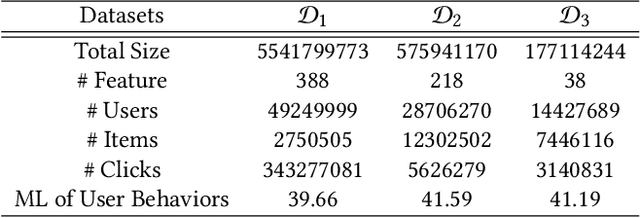
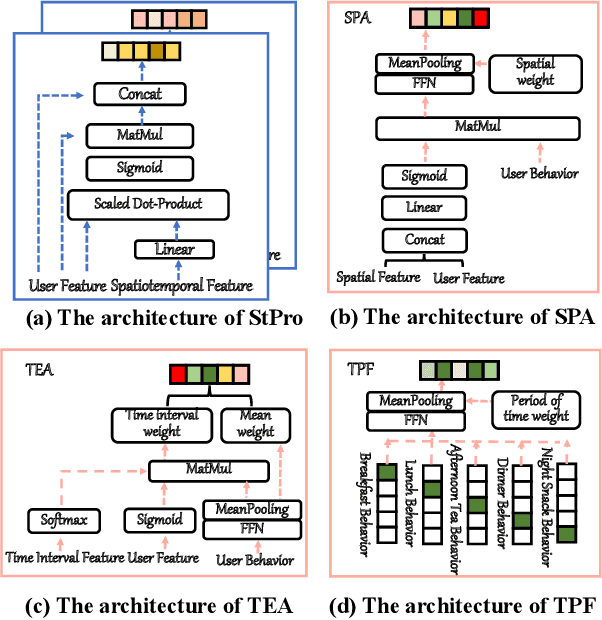
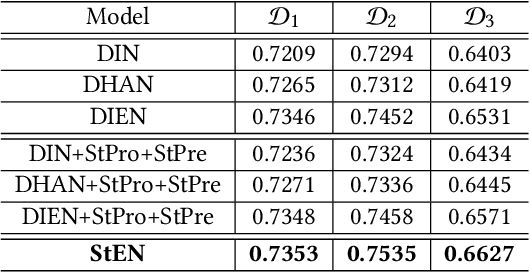
Abstract:In Location-Based Services(LBS), user behavior naturally has a strong dependence on the spatiotemporal information, i.e., in different geographical locations and at different times, user click behavior will change significantly. Appropriate spatiotemporal enhancement modeling of user click behavior and large-scale sparse attributes is key to building an LBS model. Although most of existing methods have been proved to be effective, they are difficult to apply to takeaway scenarios due to insufficient modeling of spatiotemporal information. In this paper, we address this challenge by seeking to explicitly model the timing and locations of interactions and proposing a Spatiotemporal-Enhanced Network, namely StEN. In particular, StEN applies a Spatiotemporal Profile Activation module to capture common spatiotemporal preference through attribute features. A Spatiotemporal Preference Activation is further applied to model the personalized spatiotemporal preference embodied by behaviors in detail. Moreover, a Spatiotemporal-aware Target Attention mechanism is adopted to generate different parameters for target attention at different locations and times, thereby improving the personalized spatiotemporal awareness of the model.Comprehensive experiments are conducted on three large-scale industrial datasets, and the results demonstrate the state-of-the-art performance of our methods. In addition, we have also released an industrial dataset for takeaway industry to make up for the lack of public datasets in this community.
Context-aware Heterogeneous Graph Attention Network for User Behavior Prediction in Local Consumer Service Platform
Jun 29, 2021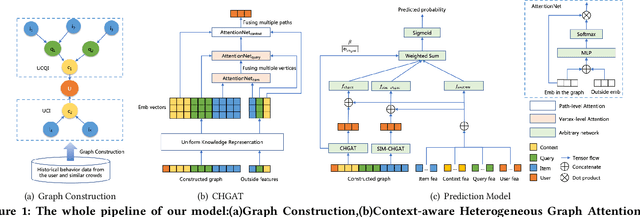

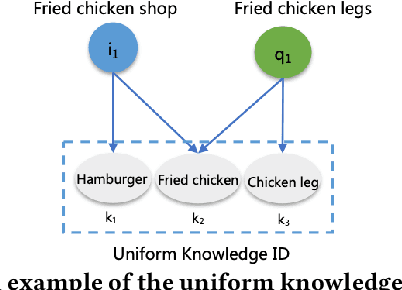
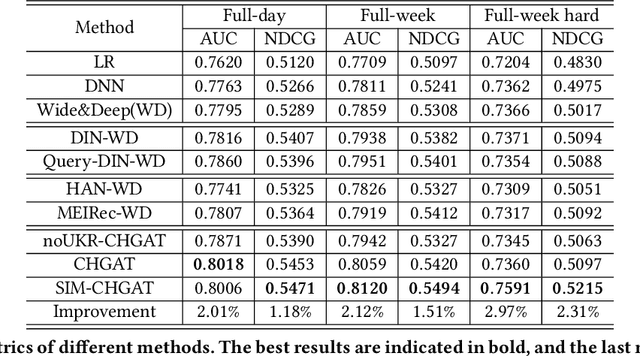
Abstract:As a new type of e-commerce platform developed in recent years, local consumer service platform provides users with software to consume service to the nearby store or to the home, such as Groupon and Koubei. Different from other common e-commerce platforms, the behavior of users on the local consumer service platform is closely related to their real-time local context information. Therefore, building a context-aware user behavior prediction system is able to provide both merchants and users better service in local consumer service platforms. However, most of the previous work just treats the contextual information as an ordinary feature into the prediction model to obtain the prediction list under a specific context, which ignores the fact that the interest of a user in different contexts is often significantly different. Hence, in this paper, we propose a context-aware heterogeneous graph attention network (CHGAT) to dynamically generate the representation of the user and to estimate the probability for future behavior. Specifically, we first construct the meta-path based heterogeneous graphs with the historical behaviors from multiple sources and comprehend heterogeneous vertices in the graph with a novel unified knowledge representing approach. Next, a multi-level attention mechanism is introduced for context-aware aggregation with graph vertices, which contains the vertex-level attention network and the path-level attention network. Both of them aim to capture the semantic correlation between information contained in the graph and the outside real-time contextual information in the search system. Then the model proposed in this paper aggregates specific graphs with their corresponding context features and obtains the representation of user interest under a specific context and input it into the prediction network to finally obtain the predicted probability of user behavior.
 Add to Chrome
Add to Chrome Add to Firefox
Add to Firefox Add to Edge
Add to Edge